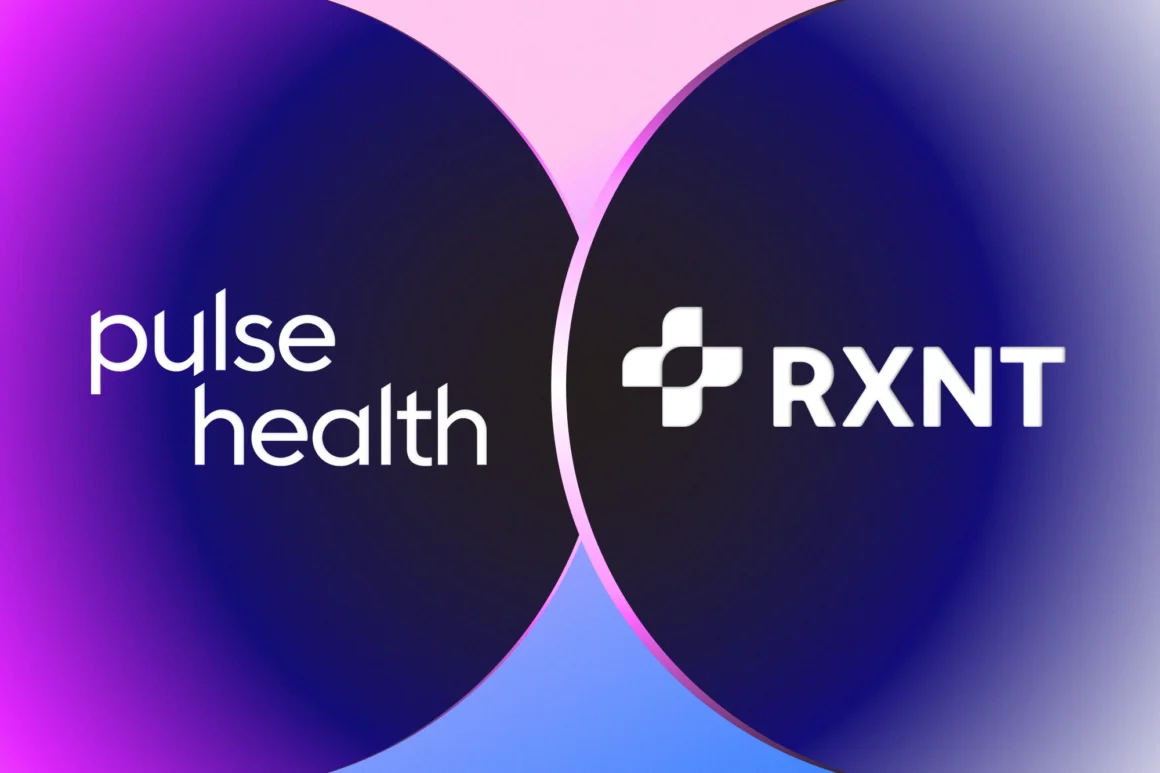Executive Summary
Pulse Health now connects with RxNT so your clinical and operational events can automatically trigger compliant, omnichannel patient outreach and analytics. By unifying EHR/PM data with Pulse’s engagement engine, practices reduce no-shows, lift refill adherence, and speed revenue follow-ups — without exporting spreadsheets or juggling multiple portals. Pulse’s integrations library and flexible APIs centralize data into a single, actionable source of truth, so your team acts faster with greater confidence. (pulsehealth.tech)
What Is RxNT?
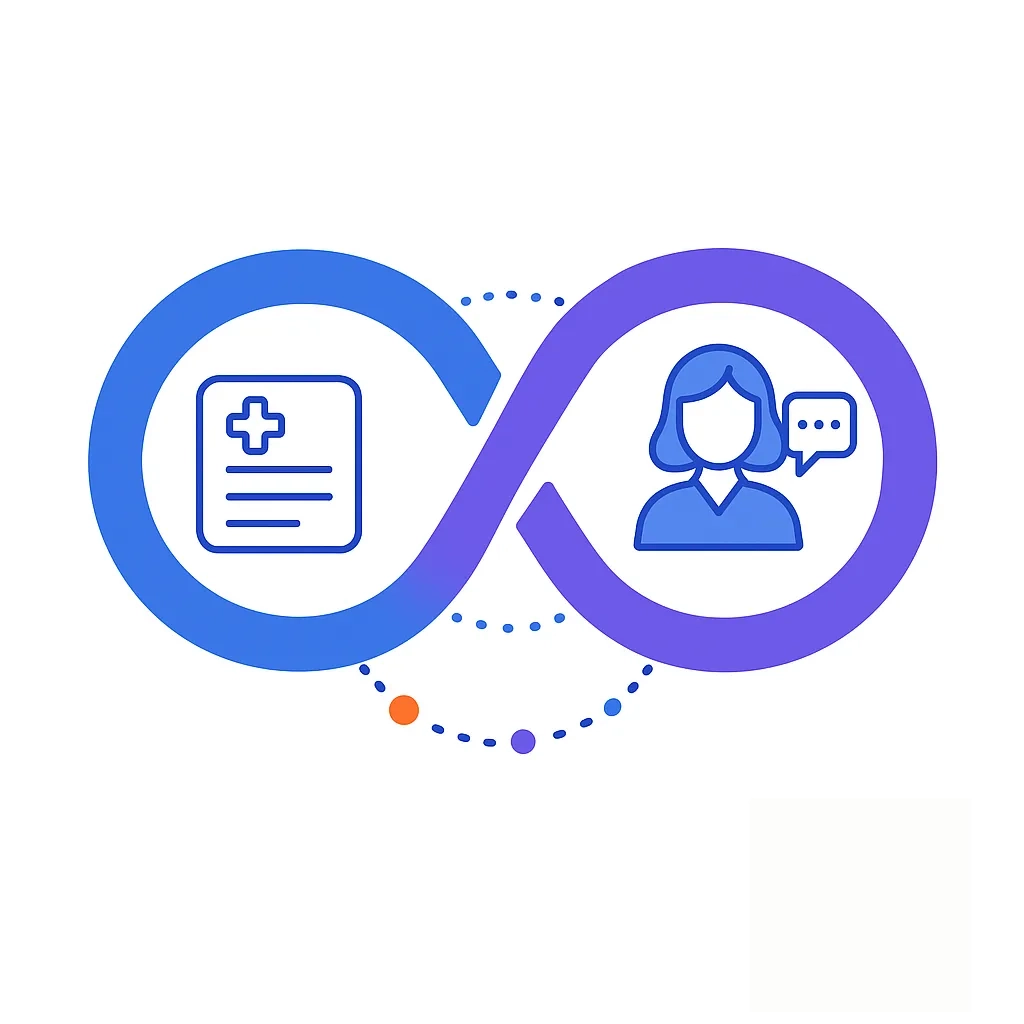
RxNT is a cloud-based platform that combines Electronic Health Records (EHR), e-prescribing (eRx), practice management (PM), billing, scheduling, and a patient portal.
It’s ONC-certified and built for ambulatory practices that want integrated clinical and financial workflows.
The patient portal provides records access, lab results, secure messaging, and online bill pay to streamline communication and collections. (RXNT, app2.rxnt.com)
Why Connect Pulse Health + RxNT?
- Unified Profiles And Event Logic: Bring patients, appointments, medications, and balances into Pulse to segment audiences and trigger outreach on real clinical/operational timelines (e.g., “refill due,” “no-show,” “balance past due”). Pulse’s engagement platform then orchestrates email, SMS, voice, and portal nudges with real-time analytics. (pulsehealth.tech)
- Operational Wins: Fewer no-shows, faster re-booking, tighter refill cycles, quicker collections, and clearer staff follow-ups — because messages fire as soon as statuses change.
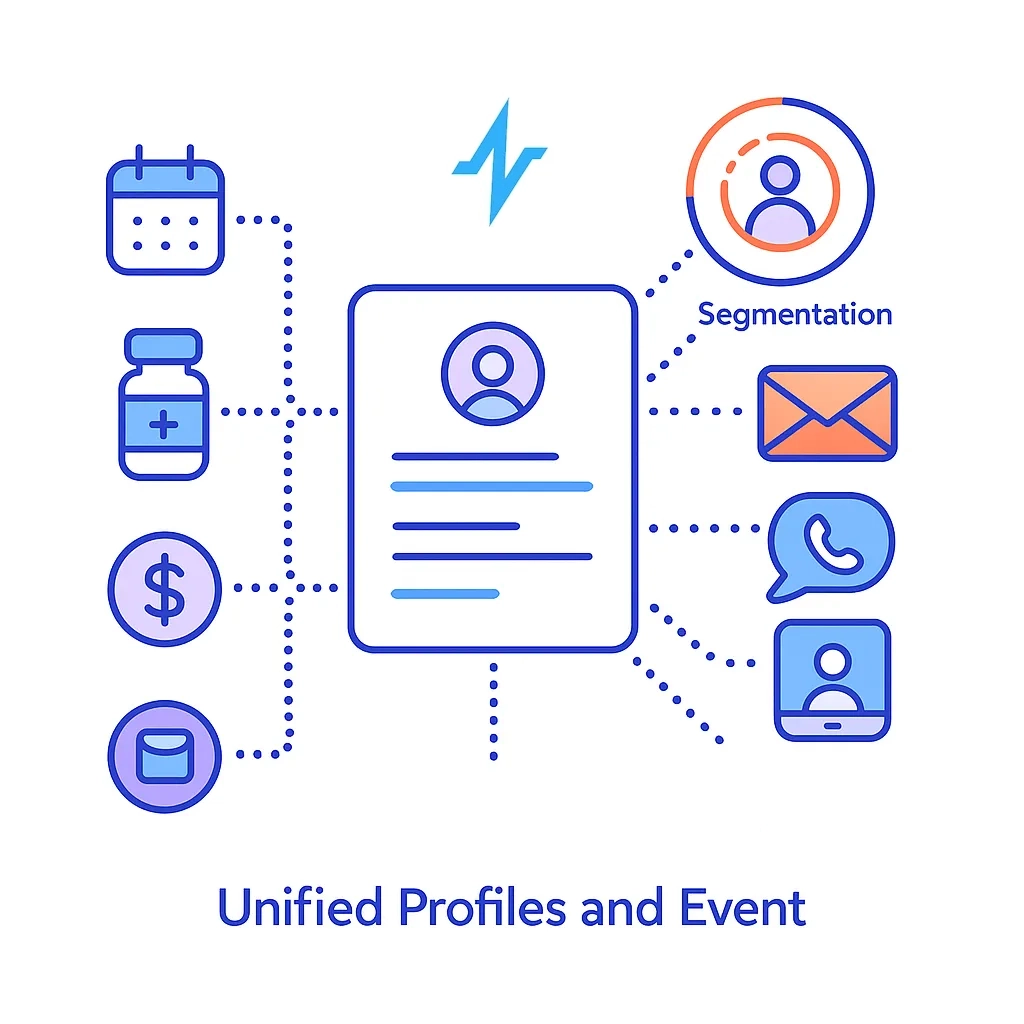

- Experience Wins: Patients receive timely, personalized communications tied to their actual care journey, not generic reminders.
- Governance Wins: Campaigns, data access, and audit history live in one place with consistent consent handling.
- Future-Proofing: Start with file-based feeds and graduate to APIs as your team is ready — Pulse supports both approaches so your roadmap isn’t boxed in. (pulsehealth.tech)
What Syncs: Data Objects And Triggers
Scope is configurable based on your RxNT subscription/modules and available interfaces.
Common Objects
- Patients & Demographics
- Providers & Locations
- Appointments & Statuses (booked, confirmed, completed, cancelled, no-show)
- Diagnoses/Encounters (where available)
- Medications & Prescriptions (including last fill and days’ supply, when available)
- Lab Orders/Results (high-level status)
- Insurance/Guarantor
- Claims, Balances & Payments (from PM/Billing)
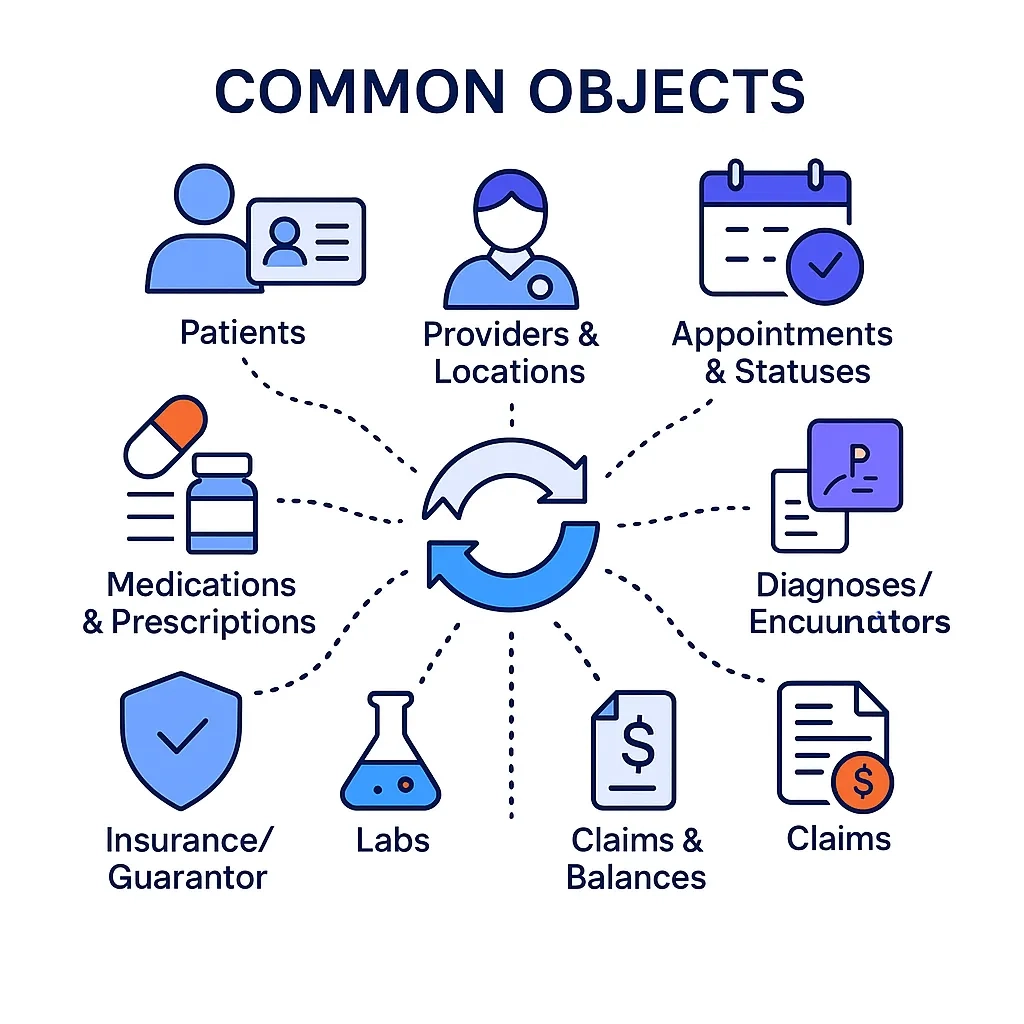
Event Triggers
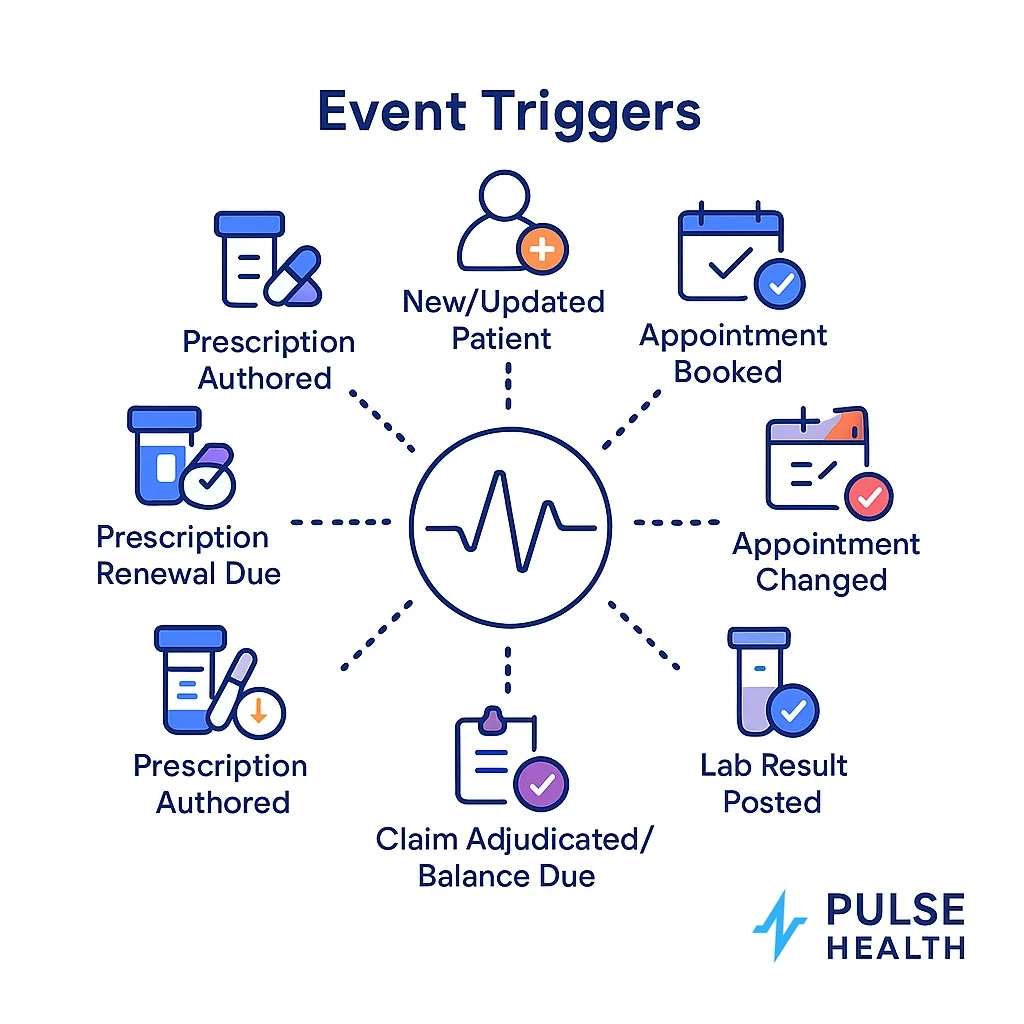
- New/updated patient
- Appointment booked/changed/no-show/completed
- Prescription authored/renewal due
- Lab result posted
- Claim adjudicated/balance due
Suggested Table For Your Build Doc
| Object | Key Fields | Direction | Frequency | Primary Keys/Dedup |
| Patient | MRN, Name, DOB, Phone/Email | RxNT → Pulse | Hourly/Daily | MRN/EMPI; name+DOB+phone fallback |
| Appointment | Appt ID, Patient, Provider, Location, Status, DateTime | RxNT → Pulse | 15–60 min | Appt ID + Location |
| Medication | Drug, Last Fill, Days’ Supply, Prescriber | RxNT → Pulse | Daily | Patient + Rx ID |
| Claim/Balance | Claim ID, Balance, Status, Payer | RxNT → Pulse | Daily | Claim ID |
| Messaging Outcomes | Send/Delivery/Replies | Pulse → RxNT (optional) | Daily | Message ID |
How The Integration Works
- Connection Pattern: Pulse ingests via secure file exchange (SFTP/CSV) or REST APIs, normalizing data to the Pulse model and upserting records idempotently. Cadence is tuned to your operational needs (e.g., every 15 minutes for appointments, nightly for claims). (pulsehealth.tech)
- Authentication & Secrets: API connections use account-scoped credentials (Account ID + API token) managed in Pulse’s secure vault; rotations follow your policy. (Pulse Engagement Cloud API)
- Reliability & Monitoring: Retry queues, dead-letter capture, field-level validations, and alerting ensure changes don’t get lost.
- Backfills: Historical loads are optional for longitudinal analytics (e.g., last 12–24 months of appointments).
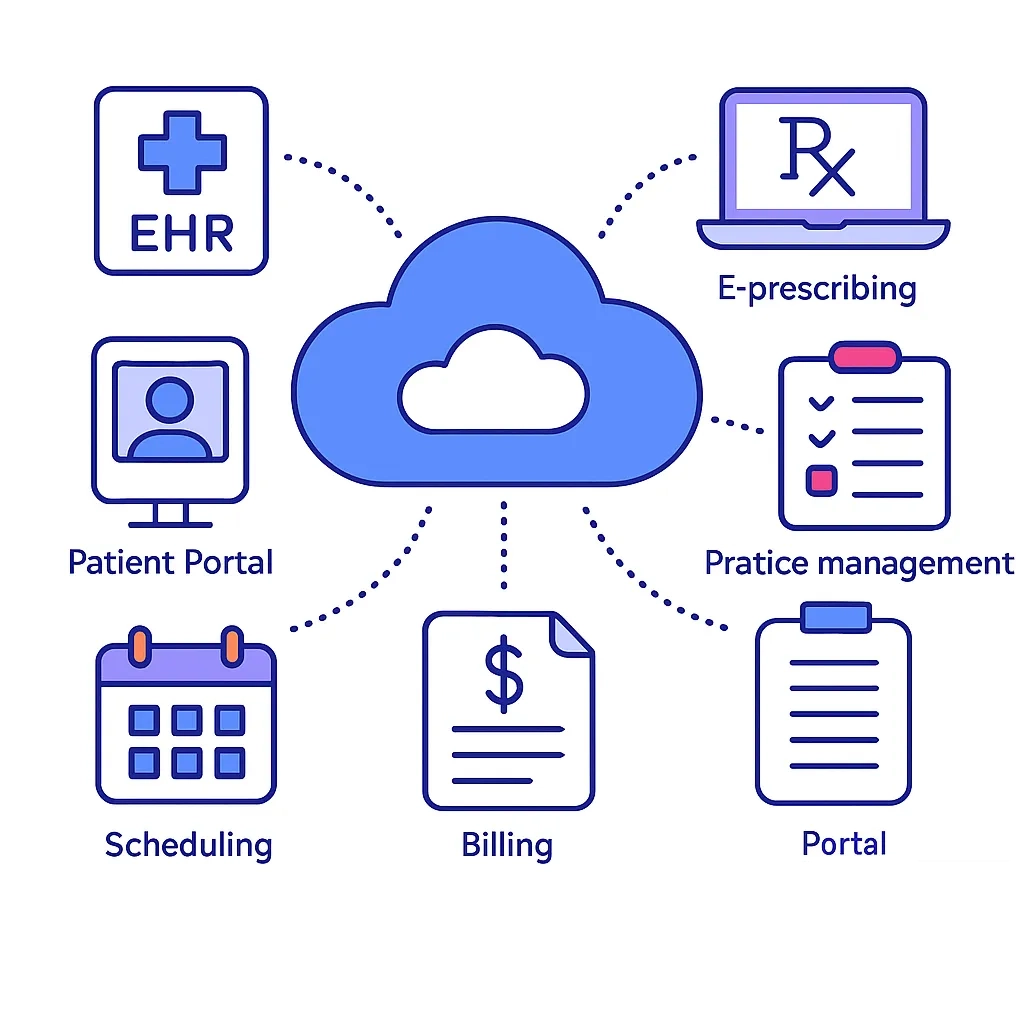
High-Level Flow:
RxNT (EHR/PM/Billing) → Integration Layer (API/SFTP) → Pulse ETL + Identity → Pulse Engagement Engine → Channels (Email/SMS/Voice/Portal) → Pulse Analytics Dashboards.
Data Mapping And Identity Resolution
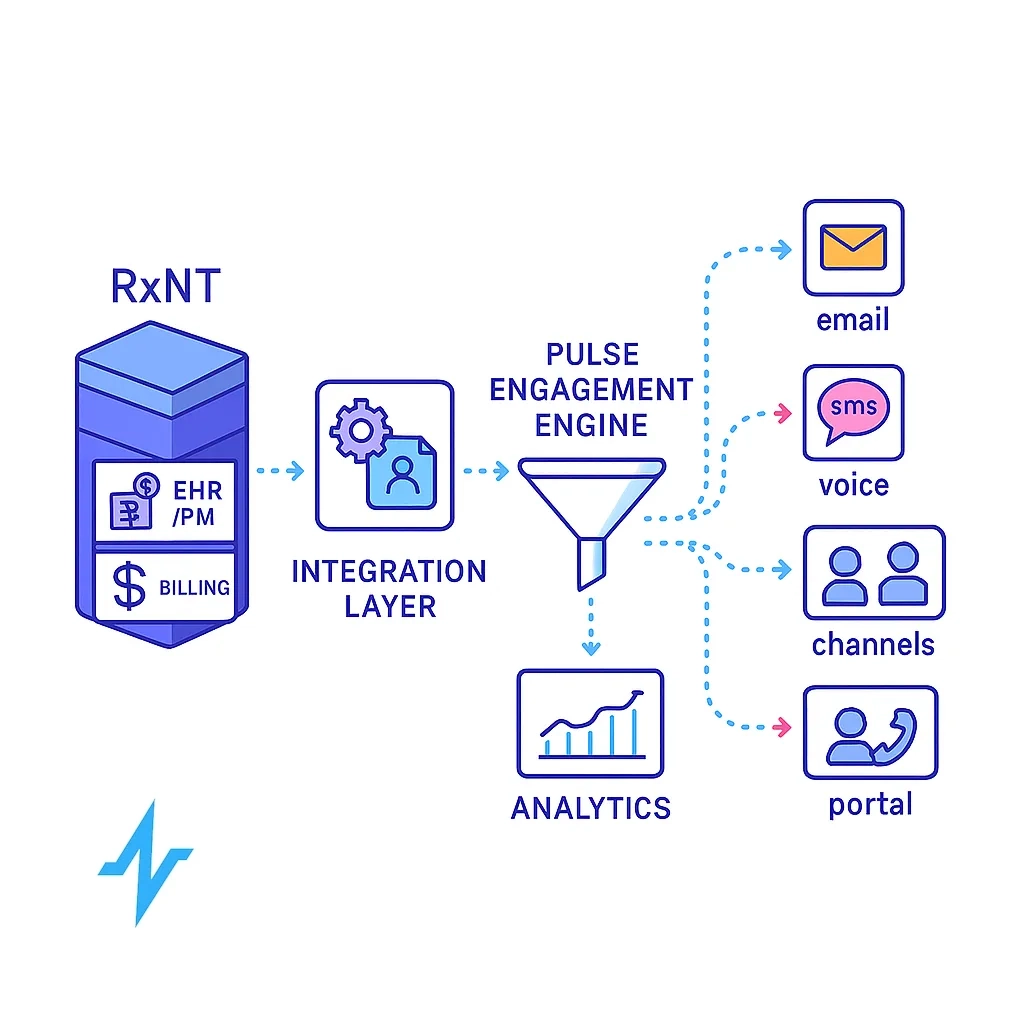
- Patient Identity: Prefer MRN/EMPI; resolve collisions with (name + DOB + phone/email).
- Provider & Location: Normalize NPI/IDs and human-readable names for filters (e.g., “Dr. Lee at Midtown”).
- Appointments: Standardize visit types/status codes; carry reschedule chains to measure cycle time.
- Medications: Normalize drug names, capture last fill + days’ supply to compute “refill due” windows.
- Claims/Balances: Ingest claim status and current balance to power payment reminders and financial counseling.
Suggested Field-Mapping Table (Excerpt)
| Source Field (RxNT) | Transform | Destination (Pulse) | Notes |
| patient_id | direct | person.external_id | MRN/EMPI preferred |
| first_name + last_name | concat, case | person.name_full | |
| dob | date normalize | person.dob | |
| appt_status | code map | encounter.status | e.g., NS → “no-show” |
| last_fill_date + days_supply | window calc | medication.refill_due_ts |
Fast-Start Use Cases You Can Launch In Weeks
No-Show Rescue & Recall
- Trigger: Appointment status = no-show.
- Flow: SMS + email same day with 1-click reschedule; voicemail fallback next day if no response.
- KPI: No-show rate, days-to-rebook, schedule utilization.
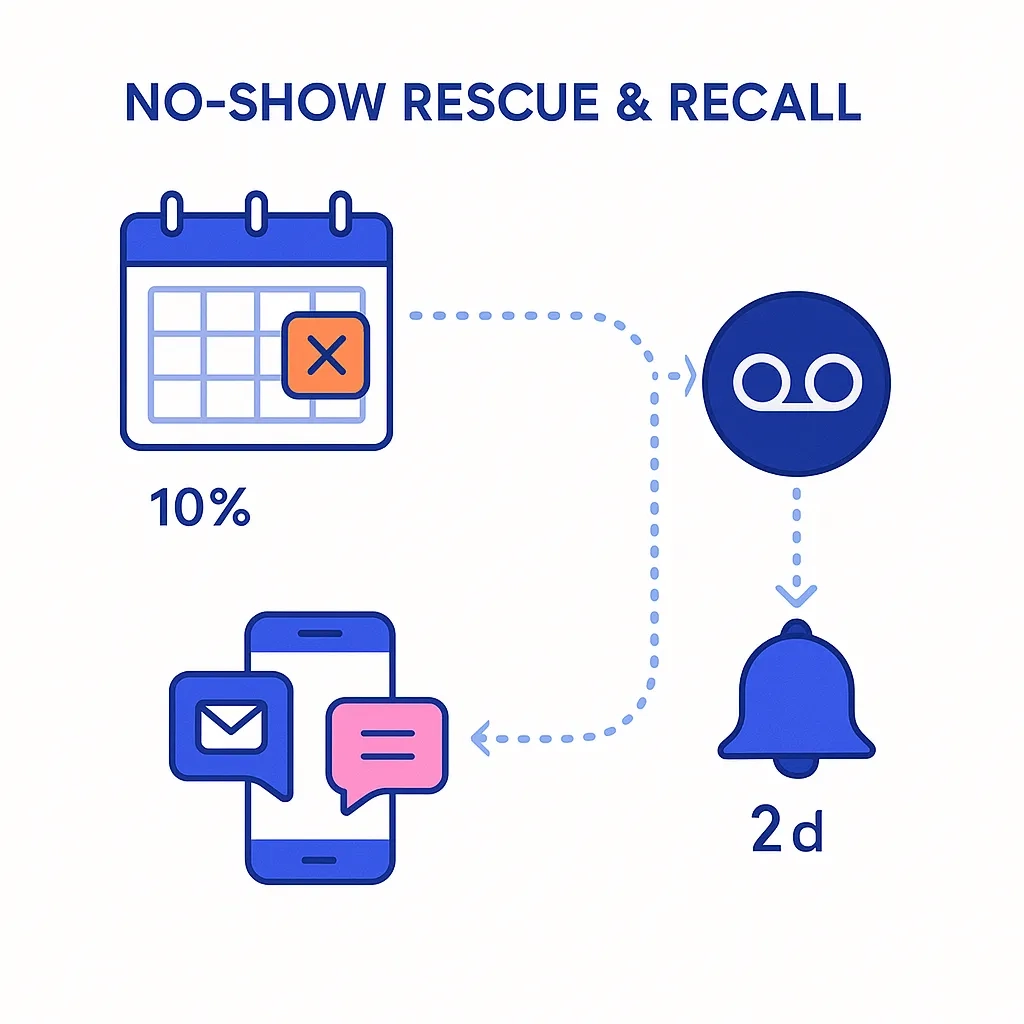
Smart Confirmations & Prep
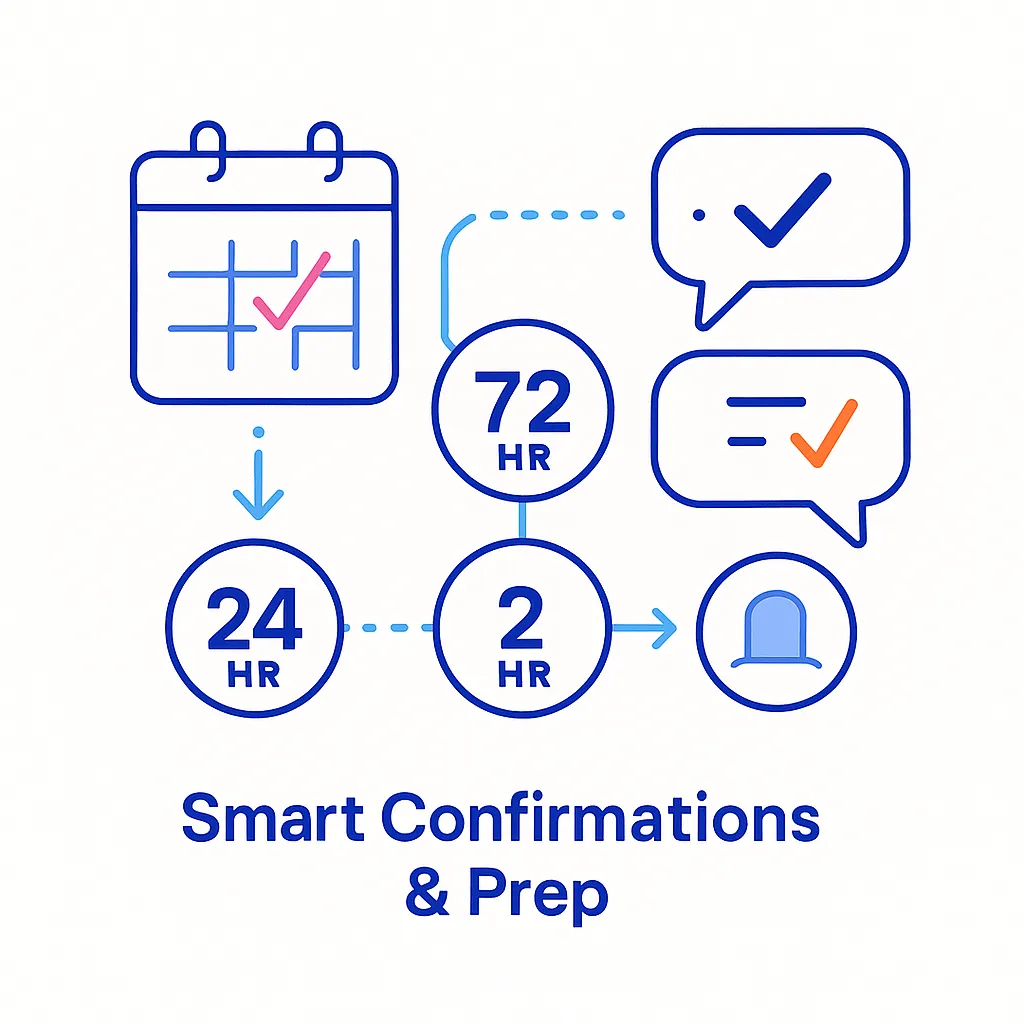
- Trigger: Appointment booked or 72/24/2-hour windows.
- Flow: Channel-sequenced reminders with prep checklists (fasting, paperwork) and two-way confirmations; route “N” or unrecognized replies to staff queue.
- KPI: Confirmation rate, prep adherence, day-of cancellations.
Refill & Adherence Journeys
- Trigger: Refill window approaching (last fill + days’ supply).
- Flow: Friendly reminders with portal/eRx link, escalate to staff if still unfilled after X days; optional education for chronic conditions.
- KPI: On-time refill %, therapy persistence at 90/180 days.
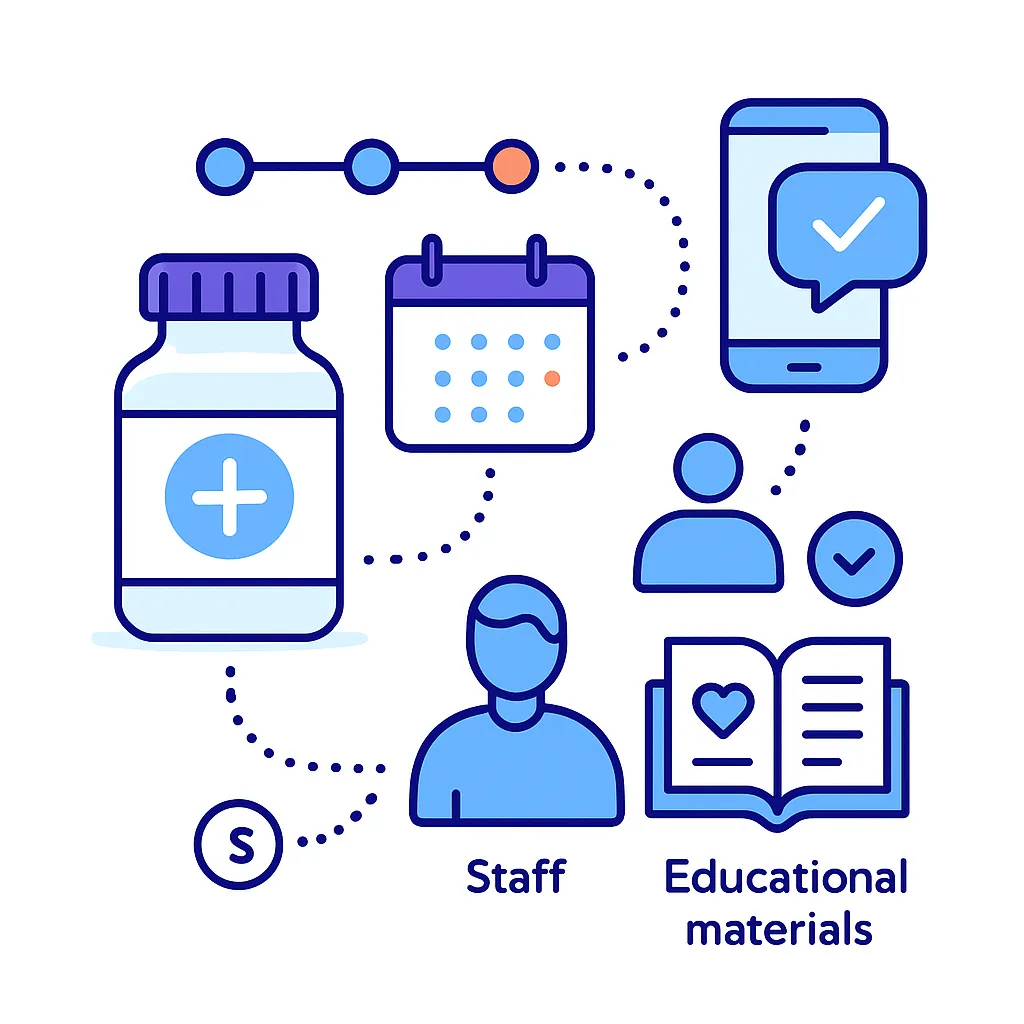
Results & Follow-Up
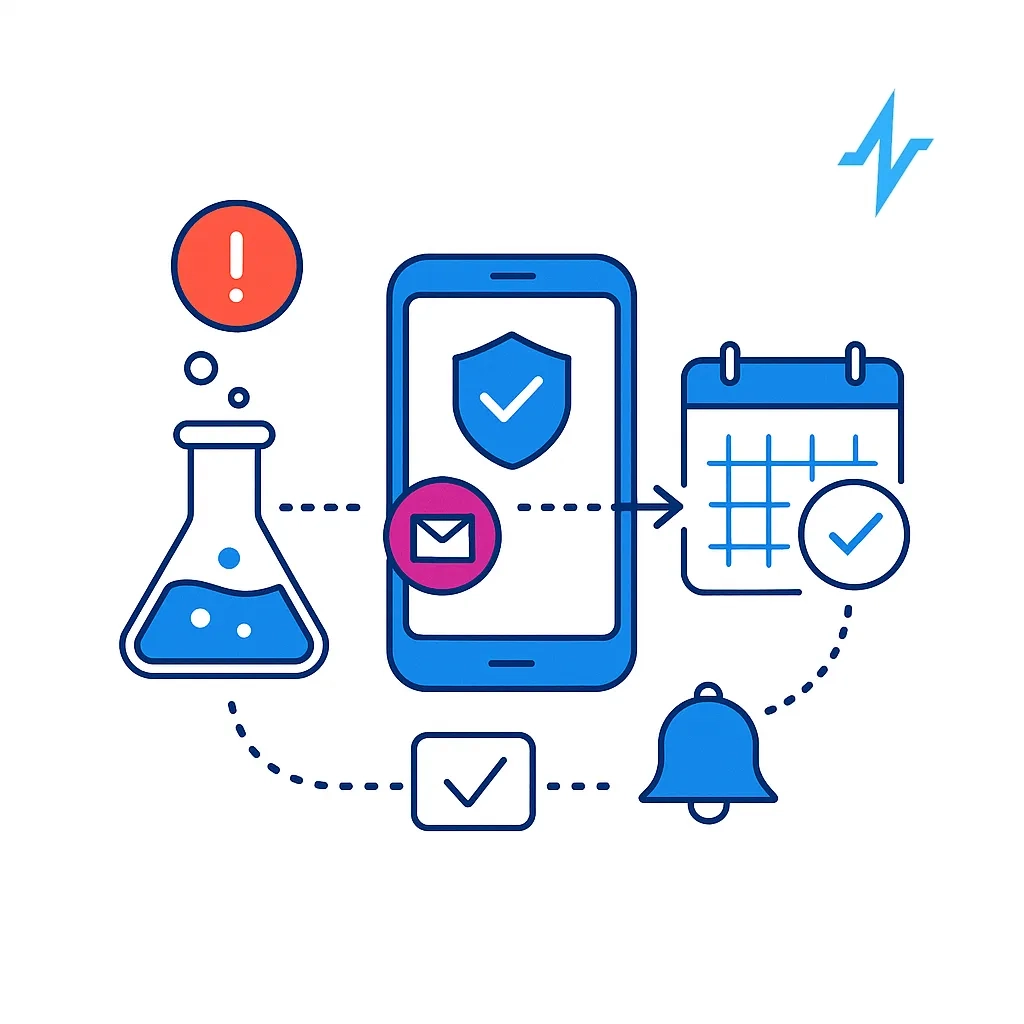
- Trigger: Lab result posted.
- Flow: Secure message that a result is available in the portal plus scheduling CTA if follow-up is required; urgent flags page staff.
- KPI: Time-to-result-view, follow-up completion.
Revenue Cycle Nudges
- Trigger: Claim adjudicated with patient balance; pre-visit eligibility missing.
- Flow: Clear statements via portal/email/SMS with click-to-pay; missing-docs collection before the visit.
- KPI: Days in patient AR, collection rate, pre-visit clearance.
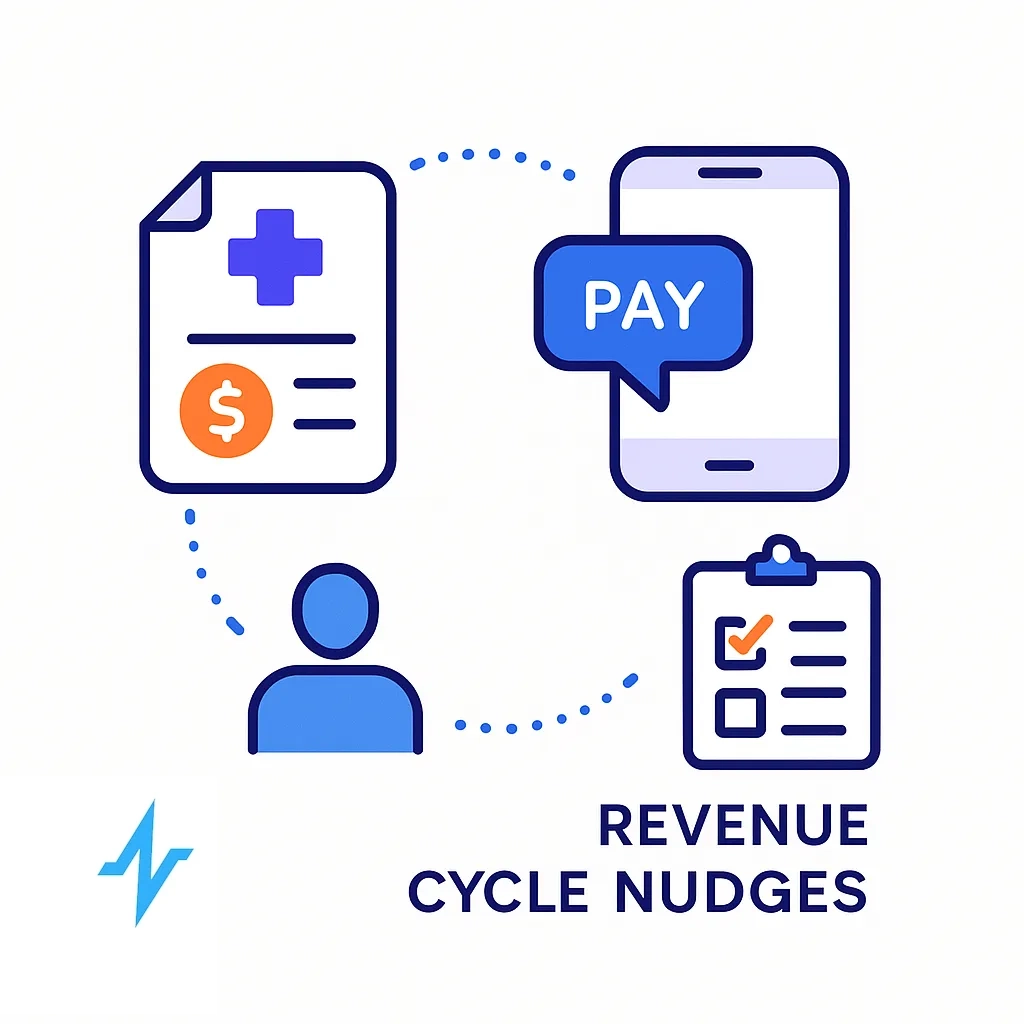
Care Gap Campaigns
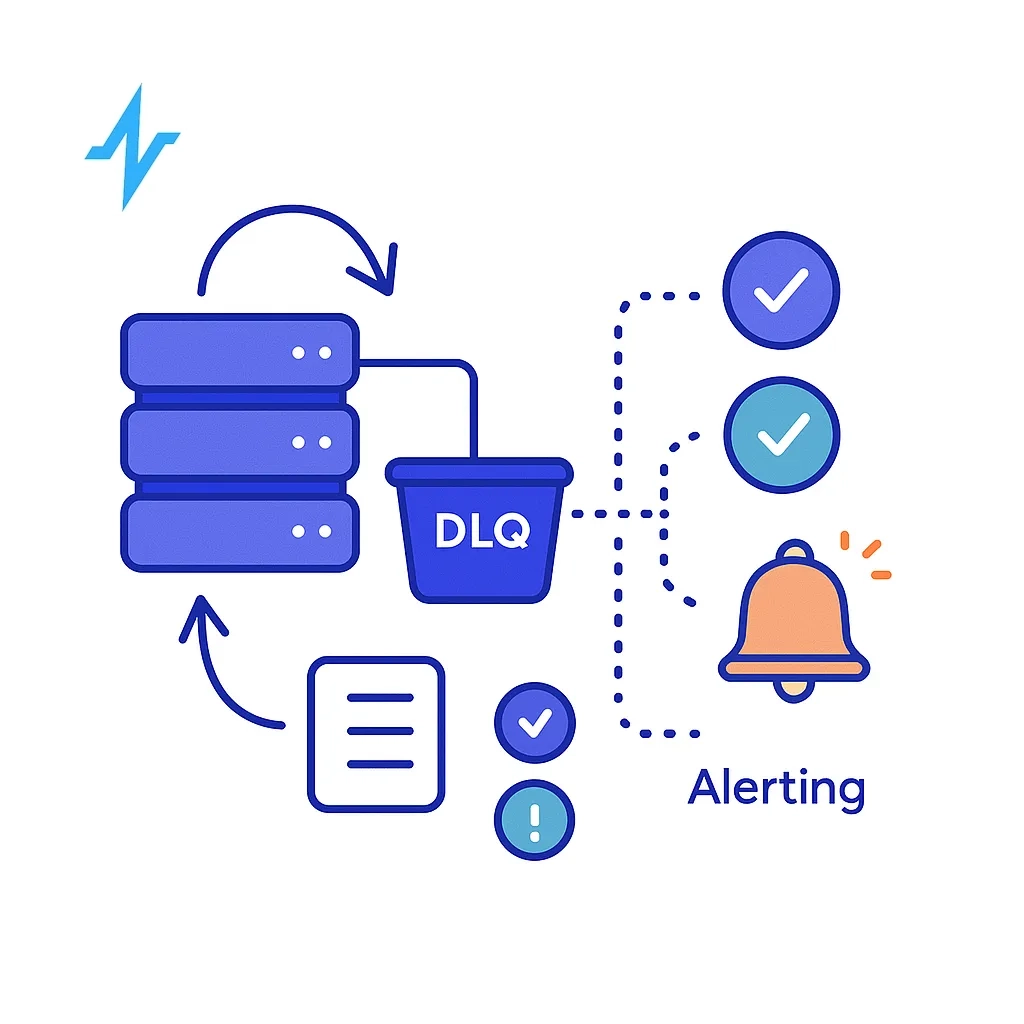
- Trigger: Age/diagnosis/last-visit criteria (e.g., well-visit, A1C, vaccines).
- Flow: Personalized education + scheduling links; multi-touch with diminishing cadence.
- KPI: Gap closure rate, cost per kept visit.
KPIs And Analytics You’ll See Day One
Pulse’s real-time dashboards show funnel performance from trigger → message → action → outcome across channels, providers, and locations. Track confirmation and re-booking rates, refill adherence, time-to-message resolution, and financial impact (kept-visit lift, collections). Analytics roll up to an executive scorecard and drill down to patient-level journeys for QA. (pulsehealth.tech)
Security, Privacy, And Compliance
- HIPAA-Aligned Controls: Encryption in transit/at rest, least-privilege access, audit logs, and BAAs.
- Consent & Preferences: Channel-level opt-ins/opt-outs respected across all campaigns and retained in a single profile.
- Regulatory Posture: RxNT’s EHR is ONC-certified; the integration respects certification boundaries and protects PHI as data moves between systems. (RXNT)
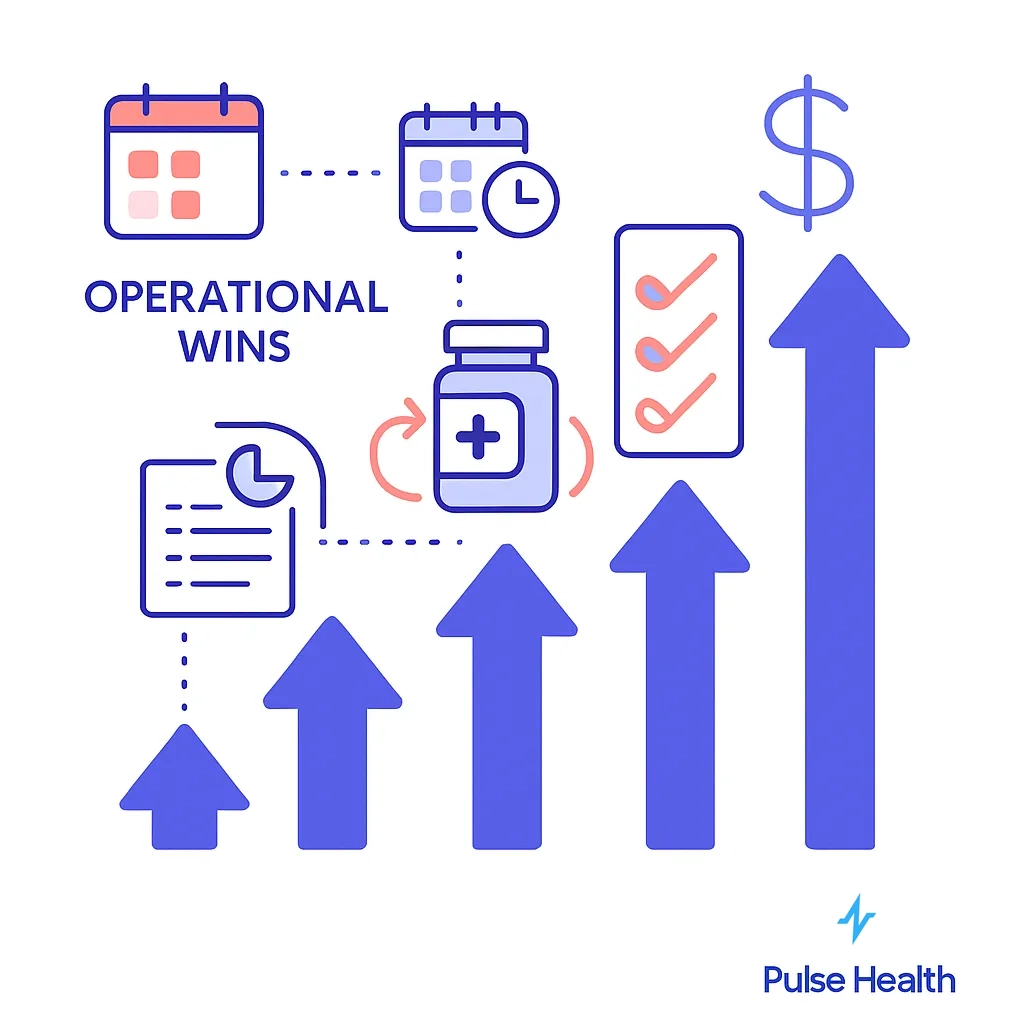
Implementation Timeline And Requirements
Prerequisites
RxNT admin approval for interfaces, Pulse account and API token (if using APIs), data-sharing/BAA on file. (Pulse Engagement Cloud API)
Week 0–1: Discovery & Scoping
Confirm data objects, triggers, cadence, and success metrics; collect API credentials or file-export access; align on sandbox vs. production.
Week 2–3: Mapping & Build
Finalize field mappings and transforms, configure identity resolution, validate sample payloads, and stand up retries/monitoring.
Week 4: QA & UAT
Run test scenarios (no-show, refill due, claim balance); backfill optional history for analytics baselines; train front-desk and billing teams.
Week 5: Go-Live & Optimize
Progressive rollout by location or department; review weekly KPI deltas; tune content, timing, and channel mix.
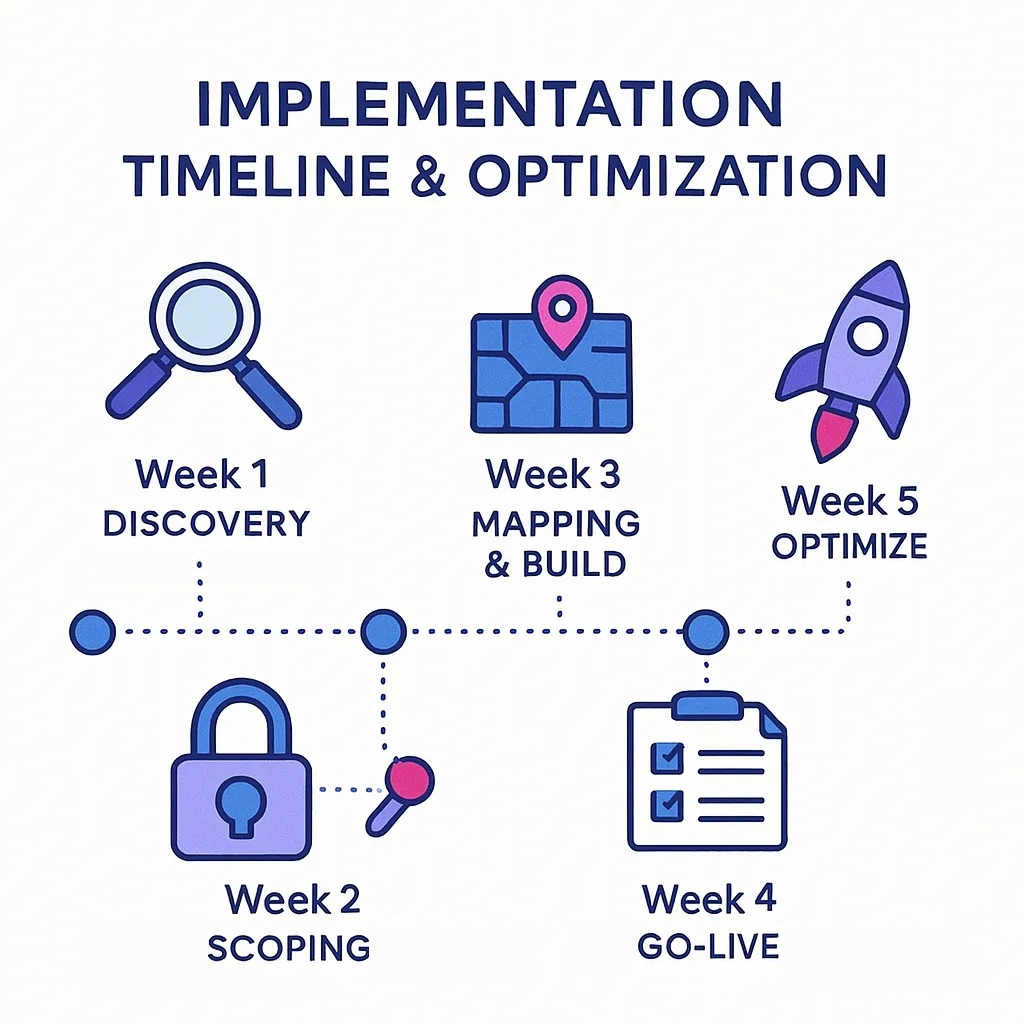
Governance And Ongoing Operations
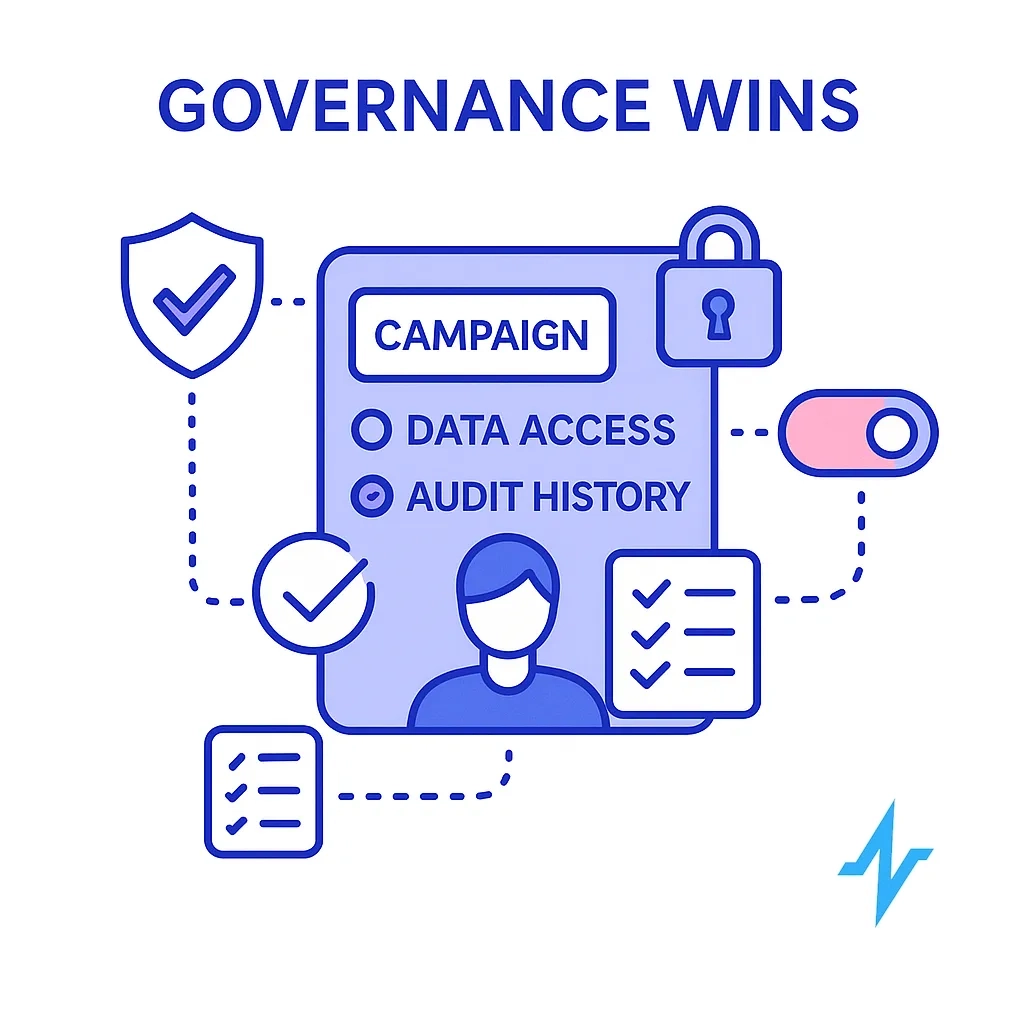
Create lightweight runbooks for integration health checks, retry handling, and schema changes.
Schedule quarterly reviews to add fields (e.g., new visit types), refresh message content, and retune cadences as seasonality or payer policies shift.
Pulse’s integrations team provides white-glove support from setup through scale.
Get Started with Pulse Health + RxNT Today
Get A Tailored Integration Plan.
Let’s review your RxNT setup, confirm the data objects/triggers that matter most, and map the fastest path to measurable impact.
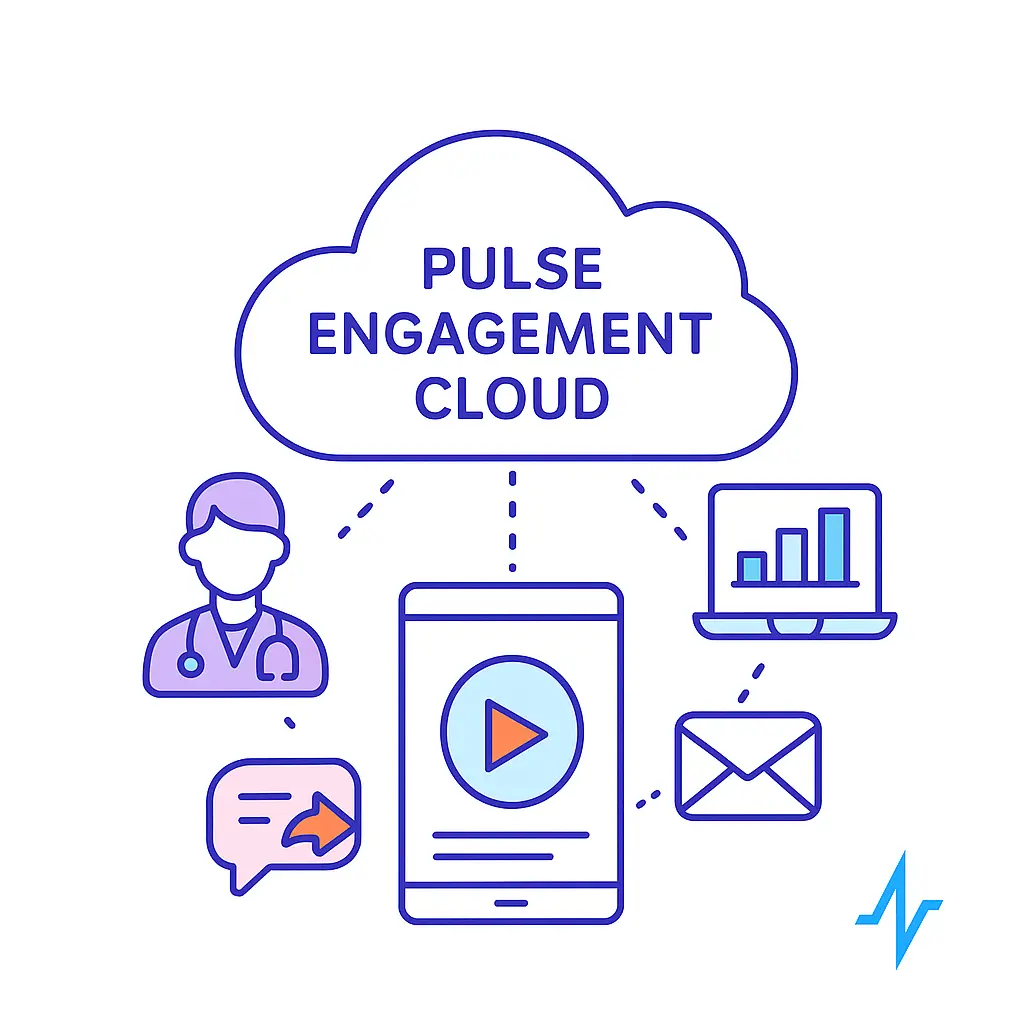
Frequently Asked Questions
We’ll scope your integration to what you have today and design a runway to add objects as your license expands.
Yes — many teams begin with SFTP/CSV for speed, then adopt APIs once the workflow proves value.
We prefer MRN/EMPI; when absent, we use deterministic rules (name + DOB + phone/email) with collision logging.
Yes — filters let you target messages by provider, specialty, or site, and you can exclude cohorts for A/B testing.
Near-real-time for engagement metrics; operational and financial metrics update on your chosen cadence.
